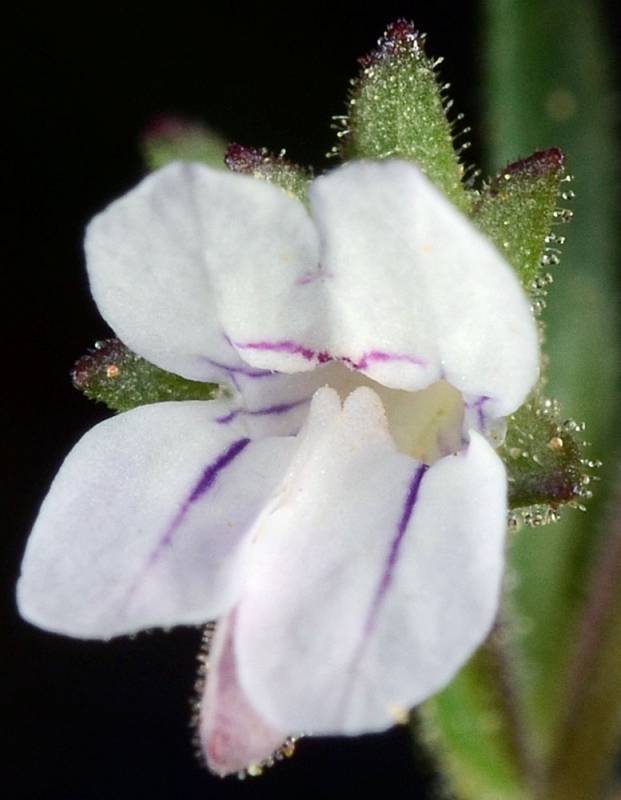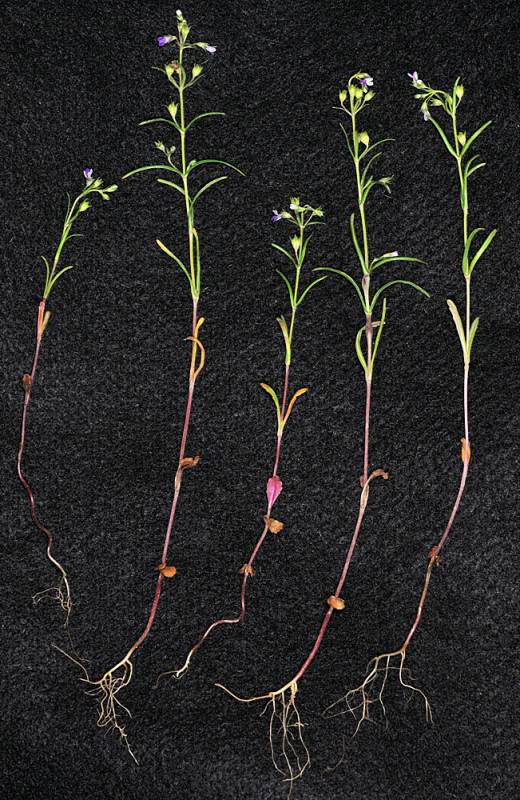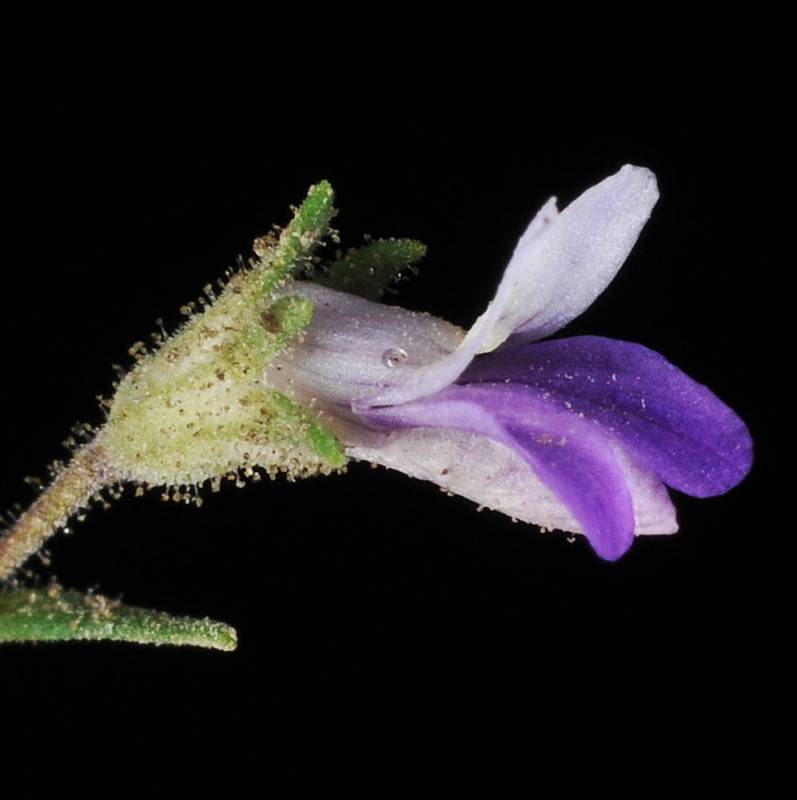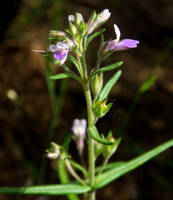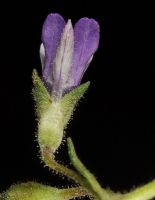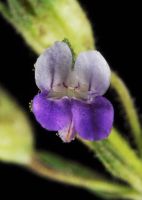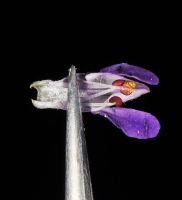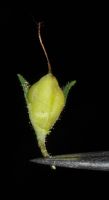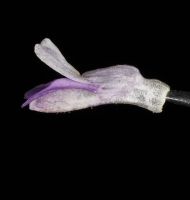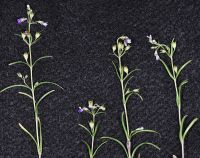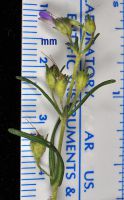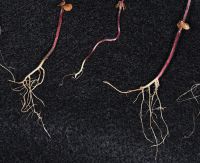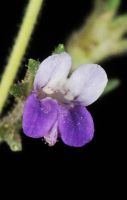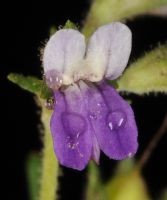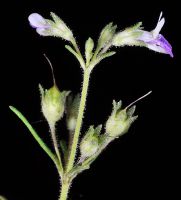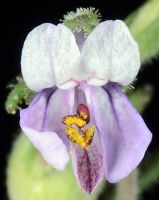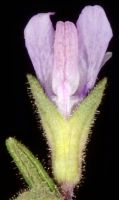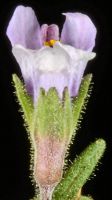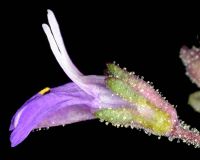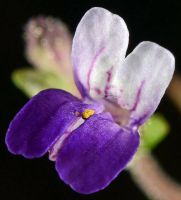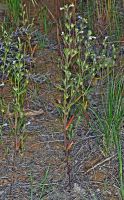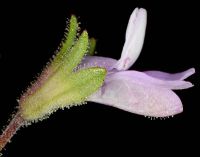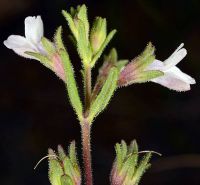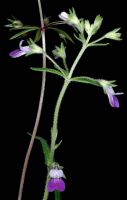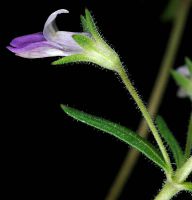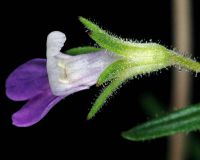Distribution: Occurring east of the Cascades crest in Washington along the Columbia River Gorge; south-central Washington to the John Day valley in Oregon.
Habitat: Open woods at low elevations.
Flowers: April-June
Origin: Native
Growth Duration: Annual
Conservation Status: Not of concern
Pollination: Bumblebees, bees, flies, beetles, wasps
Annual, the stem erect and often simple, up to 4 dm. tall, with spreading, gland-tipped hairs on the upper part.
Leaves opposite, glabrous, linear, entire, sessile.
Flowers 1-few in the leaf axils, on long pedicles; calyx lobes 5, about equaling the tube; corolla tube nearly straight, gibbous on the upper side near the base; corolla bilabiate, blue with a white upper lip, 4-7 mm. long; stamens 4.
Capsule ellipsoid.
Publication: Proc. Amer. Acad. Arts 15(1): 50. 1880.
Collinsia rattanii A. Gray ssp. rattanii
PNW Herbaria: Specimen records of Collinsia rattanii in the Consortium of Pacific Northwest Herbaria database
WA Flora Checklist: Collinsia rattanii checklist entry
OregonFlora: Collinsia rattanii information
E-Flora BC: Collinsia rattanii atlas page
CalPhotos: Collinsia rattanii photos

